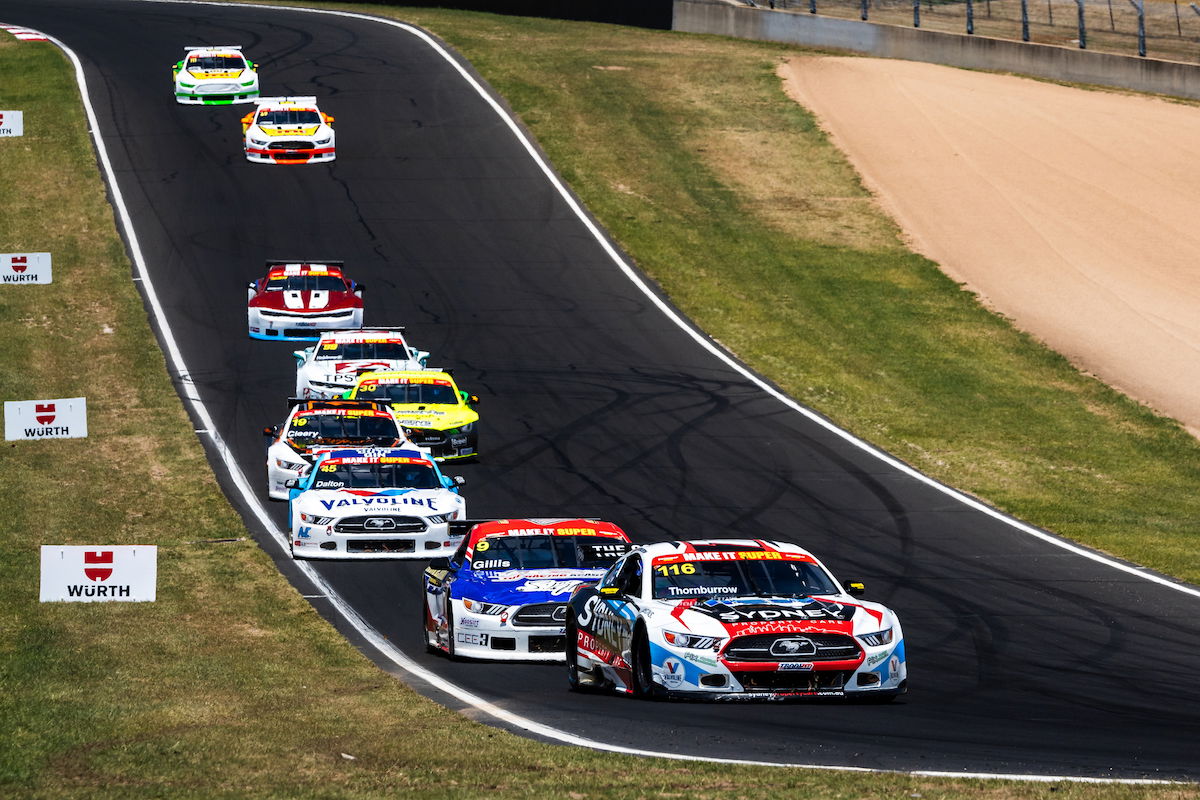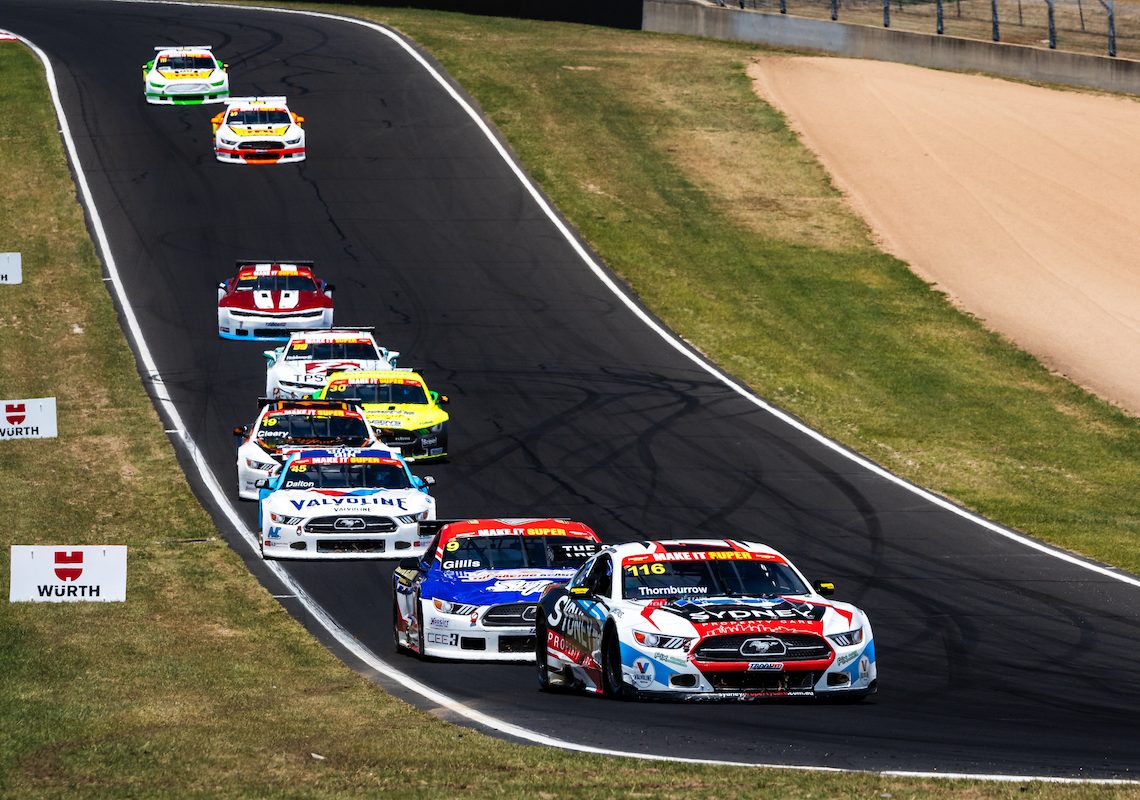

There are few in the way of negatives when it comes to the peace deal between Supercars and MA which will see the re-introduction of the Superlicence, but the axing of what was formerly its most restrictive aspect – the requirement to race in Super2.
For the most part there are no oddities in the points system, such as the original version that included the incredibly weak Australian Formula 4 Championship (run by Motorsport Australia) weighted almost identical to Super2, while F4’s rival Formula Ford was omitted from the points entirely.
The only category that raises any questions in the new-look version is the National Trans Am Series.
Trans Am has been given just seven points for its champion, that scale sliding to a single point for finishing fourth and nothing below.
To give that some perspective, you’ll score more points for winning TCR Australia or the second-tier Porsche series, Michelin Sprint Challenge.
In fact, finishing fifth in Carrera Cup will earn you one more point than winning Trans Am.
Take politics out of the equation and it’s an odd look. Trans Am is a rear-wheel-drive, V8-powered saloon class that literally uses the same body shapes (give or take) as Supercars in Gen3 trim.
The driving style required is arguably much closer to a Supercar than, say, a rear-engine Porsche on sticky Michelin tyres. It is certainly a lot closer than a front-wheel-drive, two-litre hatchback.
It’s therefore hard to see the seven-point weighting for Trans Am as anything but an outcome of the bargaining between MA and Supercars over dumping the Super2 requirement. Not only has Super2 been (fairly) given a highly favourable weighting, but what could be seen as its greatest competitor has been (unfairly) handicapped.
Motorsport Australia CEO Sunil Vohra stopped short of conceding as much when questioned by Speedcafe, but did note that weightings will be subject to change if deemed appropriate.
“I think the view is that it’s a good starting place,” he said.
“I think it’s a good spot to just let’s get underway, and let’s just monitor as we go. We’ve got the structures to look and monitor and go, ‘Does that make sense?’.
“I think we need to see how many people then look at this as a pathway – does it become something that we need to look at adjusting those points, either over or under?
“I think at the moment everyone is comfortable with where it’s landed around the points allocation for the Trans Am category, and then the other categories around it. This applies to every category – you could even make this argument about Toyota 86. Currently Toyota 86 has six points for the winner of the championship against the 15-point requirement. So you’d either need to go and do something else or you need to win that championship multiple times.
“I think all these things are things that we will just continue to monitor to go, ‘Does that make sense? Or does it make sense for us to revise?’. And we’ll do that in conjunction with all stakeholders.
“We have the ability to do that. The format we currently have is a starting point for us to get underway on the Superlicence and continue to review the points allocation across categories and adjust accordingly.”
What is clear is that Trans Am is better placed under this revised system than it was before, when it was no pathway to Supercars at all.
One easy example is Nathan Herne, who is just a single point short of a Superlicence thanks to his Trans Am efforts, despite having raced outside of Australia last year (and therefore not scored any points). Had he stayed local he would almost definitely have the required points already.
Barry Rogers, boss of Trans Am promoter Australia Racing Group, agrees that – points weighting aside – Trans Am and even TCR can now become powerful Supercars feeder categories.
That is not just down to the machinery, but the calibre of drivers in those categories such as proven Supercars-level drivers James Moffat in Trans Am and Tony D’Alberto in TCR.
“You go to Super2 and, look, there’s some absolutely fantastic young drivers in that category, but there’s also quite a number of drivers that are there because they’ve got the economics and the commercial ability to be able to do it,” he told Speedcafe.
“So, I think if you really want to measure yourself, of where you actually stand, I think TCR and Trans Am are two very good options for young guys.
“And, at the moment, probably the relevance of a Car of the Future [Supercar] to the Gen3 is probably as relevant as a Trans Am is to the current Supercar. They’re quite different cars and I sort of get it when Super2 was running the same car as the main game, of course the relevance is there, but probably until the Gen3 cars start being the Super2 car, it’s not so relevant.
“So, in the next few years, I think if you perform well in a Trans Am or a TCR car and you get the points together, I think if you’re a Supercars team owner, you’d be silly not to have a look at those type of drivers. And I look at guys that come through our place in recent years – Jordan Cox, Aaron Cameron, Benny Bargwanna – they’re all guys certainly capable of driving a Supercar, and competitively.
“Nathan Herne’s another one; he’d have absolutely no problem in getting in one.
“So let’s hope that, for the for the good of the sport… you don’t want a closed shop, you want it to be open, and this probably gives them all a bit of a chance.”




















Discussion about this post